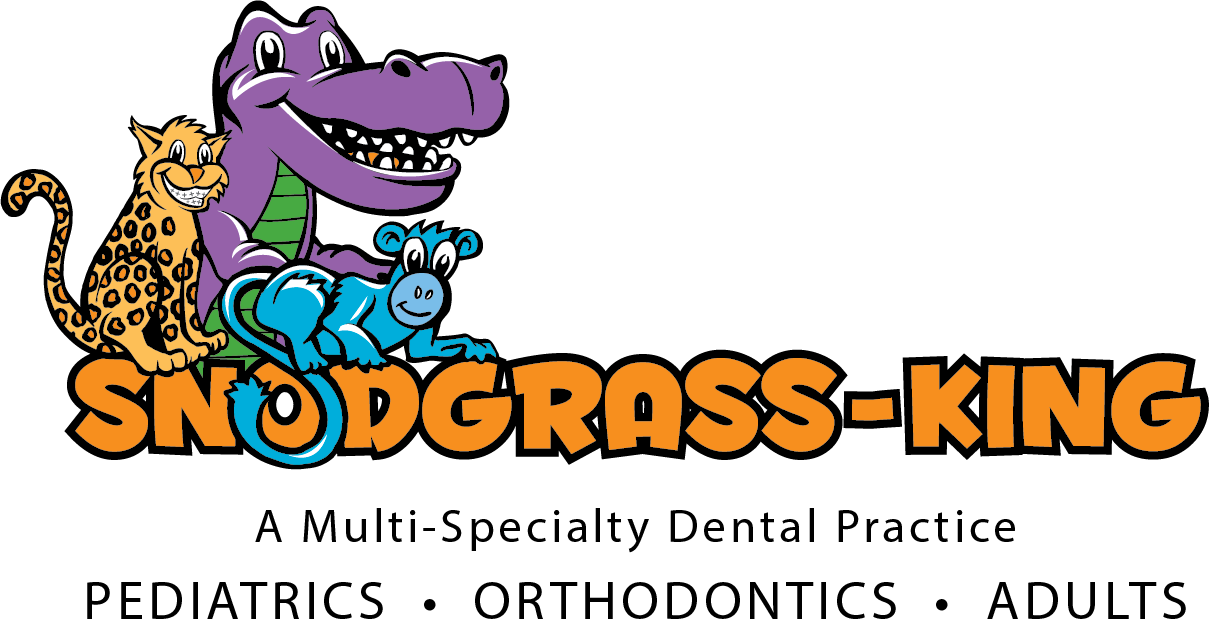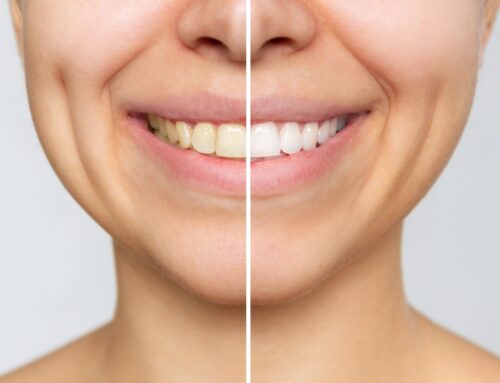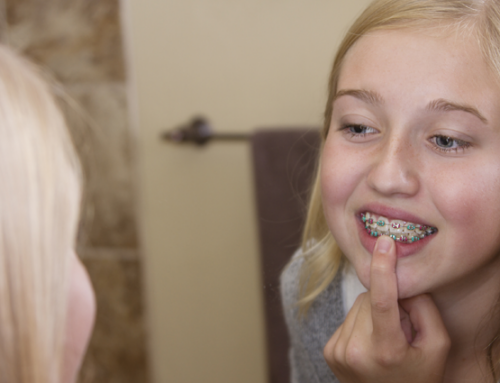
Comparing Permanent Retainers and Traditional Retainers
When it’s time for your braces to come off, then it’s time to start your next step of caring for your smile by wearing a retainer. Wearing a retainer after your treatment with braces is done is an essential part of keeping your smile straight and healthy.
The team at Snodgrass-King Dental wants to help you take a closer look at the importance of wearing a retainer, how to care for your retainer, and how long to expect to wear your retainer. We hope this information will make the decision to invest in pediatric Orthodontics at Snodgrass and King an easy decision.
Since orthodontic treatment is a serious investment that hopefully creates beneficial life-long results, orthodontic retainers are meant to keep that investment in place. However, some kids may have trouble taking care of their retainers, which might even lead to some broken or lost retainers.
Your kids may even forget to wear their retainers or even straight-up refuse to wear them. Thankfully there is a solution to a lot of these traditional orthodontic retainer problems with permanent retainers, also known as bonded retainers.
Of course, just because there are permanent retainers doesn’t mean that traditional retainers aren’t effective. Learn about the difference between permanent and traditional types of retainers for you or your child after orthodontic treatment.
Why Do I Need A Retainer?
Your teeth always have the potential to move, but the first couple of years after braces can lead to a lot more shifting and movement. If you had your braces on for two years, then two years without braces and structure could regress your teeth back to square one. Traditional retainers hold teeth in their new positions after braces. The bone and tissue around teeth need time to stabilize and set. Retainers keep the teeth still in order for stabilization to occur.
Retainers are even more essential for teenagers who are still growing because their jaws are likely to change throughout adolescence. Thus, putting your investment at a higher risk if your child does not get or wear a retainer.
How Permanent Retainers Work
Permanent retainers, also known as fixed retainers, may be the best solution for post-braces orthodontic maintenance. A thin metal wire is secured with oral glue or cement to the back of the straightened teeth. It goes virtually unseen and is unobtrusive. The back teeth, such as the molars, are usually left unbonded so they have enough room to shift and adjust appropriately as the jaw matures.
Usually, the jaw can grow and adjust all the way from puberty through your early twenties, so you can expect a little repositioning as time goes on.
Different Types of Retainers
There are three kinds of retainers that are worn after braces.
Essix Retainers: Removable retainers that are made of clear materials, but not to be confused with Invisalign. These retainers are used following the removal of braces to keep the teeth in place. Essix retainers can easily be applied and removed, and easily cleaned with retainer solution. However, the thin material can crack easily if not cared for properly, or from teeth clenching. If your Essix retainer has a crack you will want to contact your orthodontist for a new Essix retainer.
Removable Retainers: Hawley retainers are a type of common removable retainer many orthodontics select for their patients. The main difference between a removable retainer like the hawley vs. an Essix retainer is the material. Hawley, or removable retainers, are made up of a plastic base to fit behind the teeth, with metal wires to wrap around the teeth. Like Essix retainers, hawley retainers are custom fit to keep the teeth in place with gentle pressure following braces. Hawley retainers can be washed gently with a toothbrush and mild water.
Fixed Retainers: Fixed retainers are attached behind your teeth and can not be removed unless done so by your child’s orthodontist, making it a permanent retainer. These retainers are made up of a thin metal wire which is glued to the back of the teeth to keep the teeth in place and straight following braces. However, fixed retainers can break typically due to trauma to the teeth, eating hard foods, or teeth clenching. If a fixed retainer is broken, it is crucial to contact your orthodontist immediately to prevent further complications or injury to the gums.
How Long Do I Need to Wear My Retainer?
Generally, one year of retention is absolutely necessary after braces are removed. As we mentioned earlier, within the first year, the newly aligned teeth need to settle in the jawbone and surrounding tissue. For a child with gaps between teeth prior to braces, healing and settling often take longer than twelve months.
Your orthodontist will develop a plan on how long you should wear a retainer. Some people need to wear their retainer all day for an allotted amount of time, and then they can switch to wearing the retainer just at night once instructed. Because your teeth can shift back to their pre-braces space when you first get your braces off, it is likely that you will be required to wear your retainer nearly 24/7 for anywhere from 6 months to a couple of years. This is a small price to pay to keep those teeth straight.
However, each type of retainer has a different length of time to be worn.
Essix Retainers
Essix retainers should be worn day and night for the first two to three months. After your orthodontist says so, you can start wearing them only at night.
Removable Retainers
You’ll need to wear removable plastic retainers full time for the first 4 to 6 months after you get your braces off. After that, you can usually go down to just wearing them at night. However, your orthodontist will help you know exactly how long you should wear your retainers for.
Fixed Retainers
Fixed retainers are a different matter. As the name implies, they cannot be removed, but they don’t need to be. You can eat with them on your teeth, and you can still clean your teeth with them on. A fixed retainer can last for years before you’ll need another retainer made.
While some orthodontic retainers should be worn at all times for a specified amount of weeks or months upon removal of braces, eventually some removable retainers can be worn just at night while sleeping rather than throughout the day.
A Little Extra Work for a Better Orthodontic Outcome
Because fixed retainers are bonded to the teeth, learning to floss with them attached can be a bit of a challenge. Young children may still need help flossing around the retainer. Usually, it’s a bit tricky, but with practice and a floss threader, you or your child will get used to this new method of flossing.
Also, just because you have a wire bonded to your teeth is not an excuse for not taking care of your oral health. You need to make sure to clean between the teeth and around the fixed retainer in order to prevent gum disease and tooth decay. As usual, you should expect to keep seeing your dentist for regular check-ups and to keep up with your dental care. Not to mention seeing an orthodontist for permanent retainer check-ups too.
So it might be a little more work in the long term, but many patients report excellent results.
What Happens If The Permanent Retainer Breaks?
There is the possibility of breaking the fixed retainer wire. Things that can cause a permanent retainer to break include:
- Chewing hard foods or chewing on ice
- Getting hit in the mouth
- Hard biting from a mouth injury
- Brushing too hard causes wear and tear on the bonding
- Loss of wire integrity over time
As for how the retainer is fixed, that will depend on the type of break. If the wire breaks, then the retainer will have to be restructured and rebonded completely. If only one of the bonding points is loose or broken down, then more bonding material can be applied.
With a bonded retainer, teeth shouldn’t be able to move at all. If the bonded retainer breaks, however, teeth may begin to move without you noticing at first. If the glue becomes detached from one of the teeth it is holding in place, the teeth will most likely begin to shift over time.
Benefits of Permanent Retainers
Essentially, permanent retainers are a no-fuss and patient-friendly solution that parents love. Outside of your child’s routine brushing and flossing, fixed retainers can’t get left in a napkin during lunch or melt on the sidelines while your child plays sports. Plus, studies have shown that your child has a better success rate of keeping those beautiful teeth straight after braces when they have a permanent retainer.
How Long Does a Permanent Retainer Last?
While they are permanent, they do wear out over time. Luckily, they are known to last a very long time! They have been known to last 20 years and even longer with care.
Traditional Orthodontic Retainers
The power of the traditional retainer should not be denied. It is the grandfather of dental appliances that have kept teeth straight for decades.Once those braces come off, you can finally brush and floss normally, and eat whatever foods you’d like! You are finally free to enjoy your new smile. The difficult journey of hiding your teeth is no longer an issue. What a relief! It’s time to wear that new, beautiful smile proudly for all to see.
However, they’ve also been forgotten on napkins, tossed in the trash, broken, or left in the case and never worn again. Still, for all the user errors, wearing your retainer helps protect your investment of braces for years to come.
What Are Traditional Retainers Made Of?
Traditional retainers consist of wires and plastic retainer pieces that help hold the teeth in place. The wires connect everything and also form the way that the retainers are anchored to the back teeth.
How Long Do Traditional Retainers Last?
Typically, traditional retainers will last between 5-10 years. The better you take care of them, the longer they’ll last.
How Kids and Teens Can Take Care of Their Retainers
For children with removable retainers, ensure that they keep the retainer box nearby at all times for easy access. Make sure they know that if the retainer comes out of their mouth, it should go immediately into the retainer case. The sooner they establish this habit, the less likely they will be to lose their retainers in a napkin.
Please encourage your children to wear retainers when specified so that more braces are not needed in the future. It does not matter if your child just had their braces taken off or it has been seven years since they’ve had braces. Let the children’s orthodontics specialists at Snodgrass‐King keep your child’s smile as bright as their future.
How To Clean Your Retainer
For removable retainers, clean them with warm water and a toothbrush to clean off any food or debris. To clean effectively, you should clean your retainers immediately after you take them out of your mouth.
If you want to clean your retainer on a deeper level, you can use warm water mixed with dish soap and a toothbrush to scrub your retainers thoroughly.
You can also soak retainers using a denture or retainer cleaning solution like Efferdent.
For fixed or bonded retainers, proper brushing and flossing are needed around the back of the teeth and the gums touching the retainer. You’ll need to use a generous amount of floss so you can slide the floss under and around the retainer.
Retainer FAQs
What is an Orthodontic Retainer?
Retainers are orthodontic devices that are made to fit over the teeth, in one way or another, in order to hold the teeth in the right position.
How Do I Take Care of My Orthodontic Retainer?
The number one thing to do with your removable retainer to take care of it is ALWAYS put it in its case when you’re not wearing it. This will prevent you from throwing it away accidentally, and prevent you from losing it.
As a rule of thumb, you should clean your retainer at least once a day.
Your orthodontist can give you more specific instructions for how to clean it and protect the wires from getting damaged.
Can You Get A Retainer At A Dentist’s?
It depends on if your dentist’s office has orthodontic services. Usually, you’ll need a specific orthodontist with specific training to give you the care necessary for successful orthodontic treatment. However, even a normal dentist’s office can help you with the first step of treatment. At a pediatric dentistry office, we can perform x-rays, take teeth impressions, and other prep work before you meet with your orthodontist.
Pediatric Orthodontists at Snodgrass & King
If you have any questions about braces, retainers, or other orthodontic treatments, give us a call! We would be happy to chat about your options and how they may benefit you or your children when you visit our pediatric dental office.
We would be happy to chat about your options and how retainers may benefit you. As your Nashville Orthodontist, we fully understand that orthodontic care is an investment in healthy smiles, and we want to help make that investment one in a lifetime with the proper attention and treatment.
Request an appointment easily online today!





